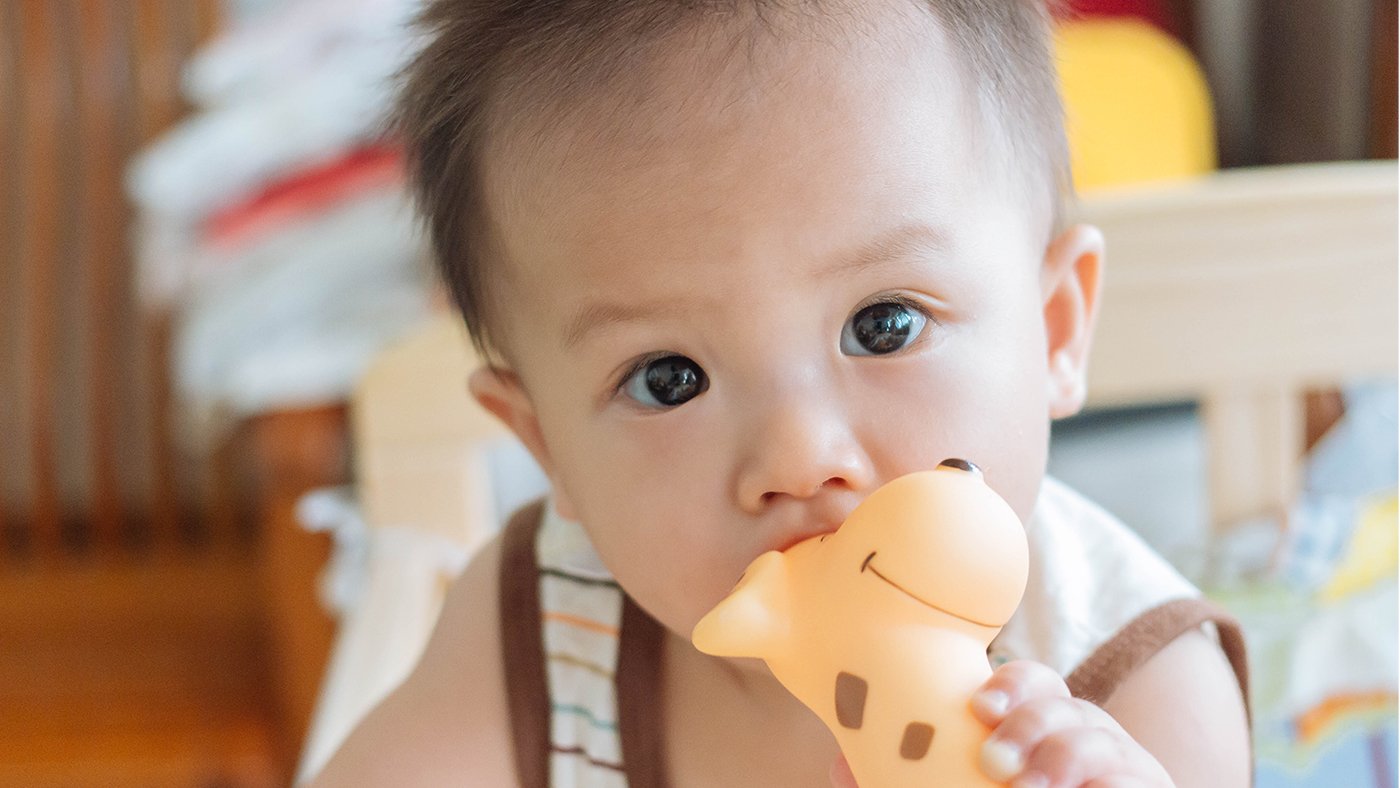Looks at objects as they hold them and brings them to their mouth

Your baby will have been exploring objects with their mouth for some time and now. As their vision develops, they will start to bring together information from what they see and feel to understand objects.
Exploring objects and posture
Your baby’s vision will be clearer now and, as they have more experience of looking at objects, they will begin to link what they see and what they feel. Looking more purposefully at objects before they put them in their mouth is significant in sensory and cognitive development.
It is thought that from birth, babies can combine information from their senses, this is known as ‘cross-modal perception’, [1] However, the development of vision and physical skills provides more opportunities for your baby to look at and explore objects.
Until now, much of the information your baby will have gained about objects will have been gained through touch either with their hands or mouth. They will continue to use touch as one of the main ways to explore objects for some time. But using information from what they can see alongside what they feel will support them to build their understanding of objects and to connect information from their senses.
The development of greater postural control supports your baby’s exploration of the world, when your baby can sit up, or move they are able to explore objects in different ways.
What next?
As your baby’s vision develops, they will be able to watch objects as they move and might be more interested in watching objects that are further away. They will begin to link their actions with the movement of objects and will learn about how in which objects can be combined, so covering objects, watching objects as they collide and stacking objects. Your baby will watch their hands as they move objects and continue to integrate information from their senses to develop their understanding of the world.
References
[1] Goswami, U.(2015) Children’s Cognitive Development and Learning.York: Cambridge Primary Review Trust.